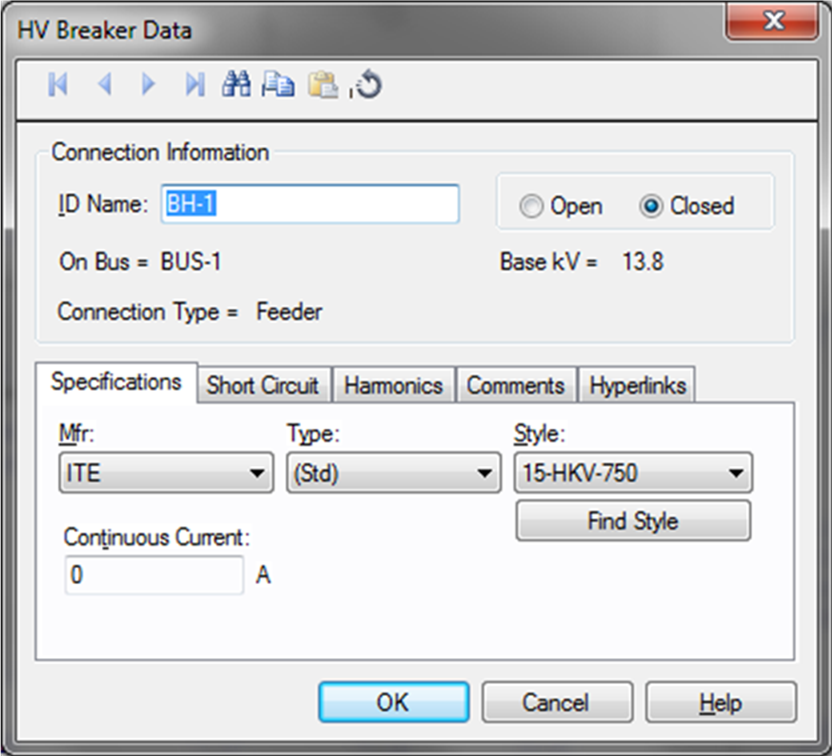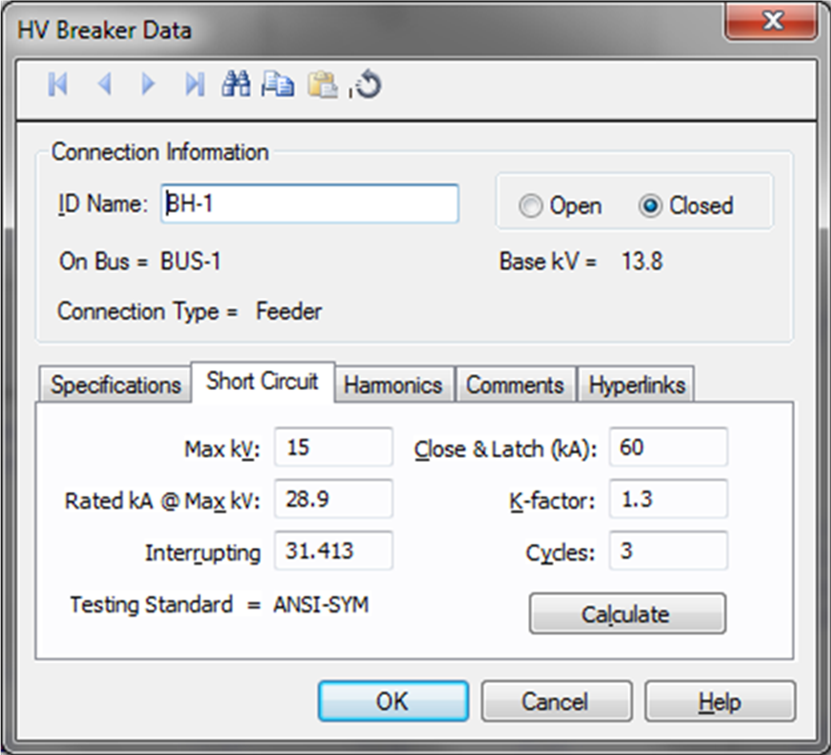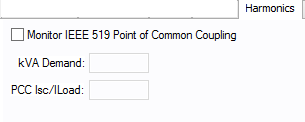
Figure 1: HV (High Voltage) Breaker Data Dialog Box
This dialog box includes the following areas and tabs:

Figure 1: HV (High Voltage) Breaker Data Dialog Box
| Option | Description |
|---|---|
| Mfr |
Provides a list of high voltage breaker manufacturers available in the device library. After you select a manufacturer, the available styles are displayed in the Style field. If the desired manufacturer is missing from the list, choose Other. |
| Type | High voltage breaker types available from the manufacturer chosen in the Mfr field above. |
| Style | High voltage breaker styles which correspond to the yellow column on the device library page for the manufacturer and type chosen. |
| Find Style |
Click to search for a specific style of breaker. You can do a partial character search or perform an exact match search.
|
| Continuous Current | The continuous current of the high voltage breaker. This value is for reference only and does not affect analysis. |

Figure 2: Short Circuit Tab

Figure 3: Harmonics Tab
This tab is read-only and appears only if you have imported data from an SKM Data Format file. See Importing an SKM Format File for more information.
See Comments for information.
See Hyperlinks for information.
| Database Technical Reference |

|